I checked the mentioned post, first it has nothing to do with AngularJS, second, the answer to that post is: And NO, you can't use JSONP for fetching html data.
How come my post is a duplicate, than in that other post the answer says - you cannot do that, but here people say that I can (via $sce)? Who is right?
Basically I want to make this work:
When I use $http.get:
getWeatherForecast() {
return this.$http.get('https://weather.gc.ca/city/pages/on-143_metric_e.html');
}
I get exception:
XMLHttpRequest cannot load https://weather.gc.ca/city/pages/on-143_metric_e.html. No 'Access-Control-Allow-Origin' header is present on the requested resource. Origin 'http://localhost:8080' is therefore not allowed access.
Its clear - the CORS issue.
But it should be working for JSONP, right?
When I use $http.jsonp:
getWeatherForecast() {
return this.$http.jsonp('https://weather.gc.ca/city/pages/on-143_metric_e.html');
}
I get exception:
angular.js:14642 Error: [$sce:insecurl] http://errors.angularjs.org/1.6.5/$sce/insecurl?p0=https%3A%2F%2Fweather.gc.ca%2Fcity%2Fpages%2Fon-143_metric_e.html at http://localhost:8080/node_modules/angular/angular.min.js:7:76 at getTrusted (http://localhost:8080/node_modules/angular/angular.min.js:157:67) at Object.c.(anonymous function) [as getTrustedResourceUrl] (http://localhost:8080/node_modules/angular/angular.min.js:158:352) at q (http://localhost:8080/node_modules/angular/angular.min.js:103:257) at http://localhost:8080/node_modules/angular/angular.min.js:102:8 at http://localhost:8080/node_modules/angular/angular.min.js:136:167 at m.$digest (http://localhost:8080/node_modules/angular/angular.min.js:147:70) at m.$apply (http://localhost:8080/node_modules/angular/angular.min.js:150:281) at gapi.client.init.then (http://localhost:8080/app/google.auth.js:26:33) at h.r2 (https://apis.google.com//scs/apps-static//js/k=oz.gapi.en_GB.F7DGotPmXwE.O/m=auth2,client/rt=j/sv=1/d=1/ed=1/am=AQ/rs=AGLTcCNq_HS-9xmY0NiaH7I_fyUJGoSh1Q/cb=gapi.loaded_0:107:107) "Possibly unhandled rejection: {}"
Full service code:
Not sure how to use $sce, the original AngularJS documentation is absolutely unclear. Changed code to this, now it throws many other exceptions:
namespace AppDomain {
export class GoogleService {
static $inject: string[] = ['$q', '$http', '$sce'];
constructor(private $q: ng.IQService,
private $http: ng.IHttpService,
private $sce: ng.ISCEService) {
console.log('GoogleService');
}
getWeatherForecast() {
let url = 'https://weather.gc.ca/city/pages/on-143_metric_e.html';
this.$sce.trustAsResourceUrl(url);
return this.$http.jsonp(url).then(response => {
var xxx = response;
}, response => {
var yyy = response;
})
}
angular.module('app').service('GoogleService', GoogleService);
}
And now I am getting all these errors (why cant they write clear documentation that people can understand :(
